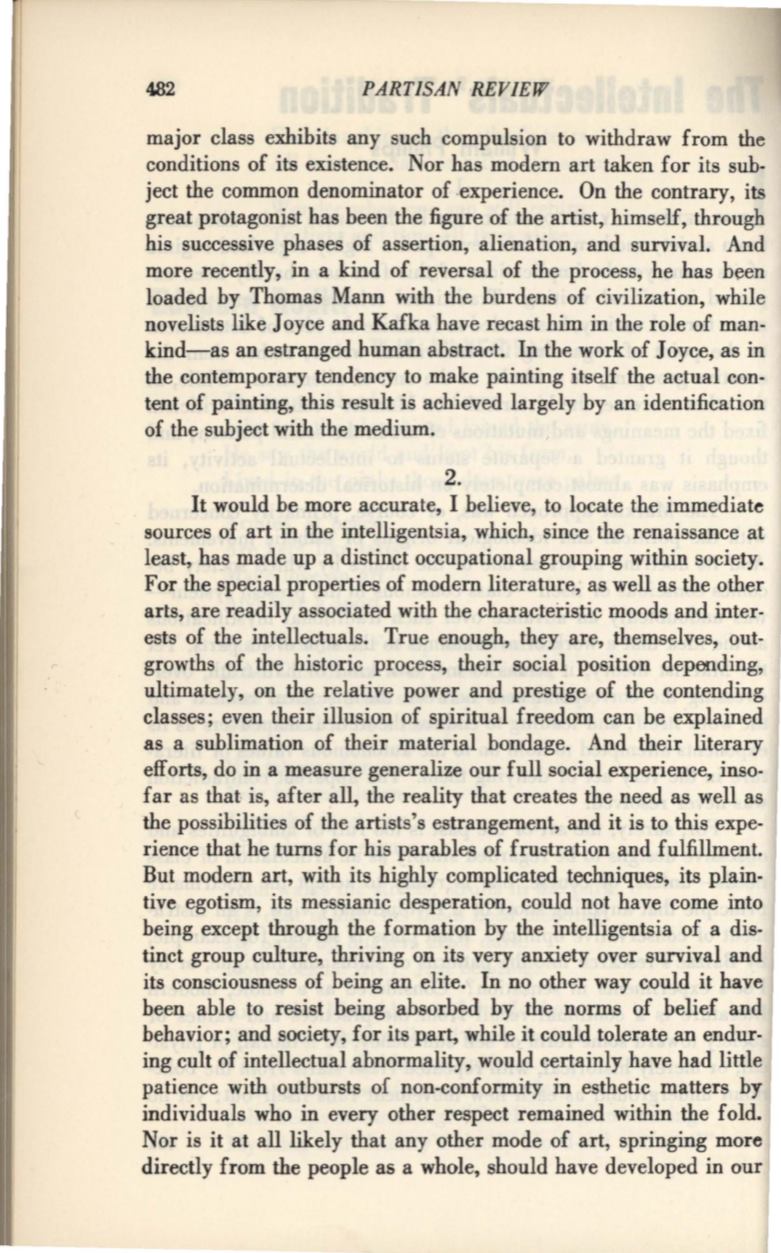
482
PARTISAN REVIEW
major class exhibits any such compulsion to withdraw from the
conditions of its existence. Nor has modern art taken for its sub–
ject the common denominator of .experience. On the contrary, its
great protagonist has been the figure of the artist, himself, through
his successive phases of assertion, alienation, and survival. And
more recently, in a kind of reversal of the process, he has been
loaded by Thomas Mann with the burdens of civilization, while
novelists like Joyce and Kafka have recast him in the role of man–
kind-as an estranged human abstract. In the work of Joyce, as in
the contemporary tendency to make painting itself the actual con–
tent of painting, this result is achieved largely by an identification
of the subject with the medium.
2.
It would be more accurate, I believe, to locate the immediate
sources of art in the intelligentsia, which, since the renaissance at
least, has made up a distinct occupational grouping within society.
For the special properties of modern literature, as well as the other
arts, are readily associated with the characteristic moods and inter–
ests of the intellectuals. True enough, they are, themselves, out–
growths of the historic process, their social position depending,
ultimately, on the relative power and prestige of the contending
classes; even their illusion of spiritual freedom can be explained
as a sublimation of their material bondage. And their literary
efforts, do in a measure generalize our full social experience, inso–
far as that· is, after all, the reality that creates the need as well as
the possibilities of the artists's estrangement, and it is to this expe–
rience that he turns for his parables of frustration and fulfillment.
But modern art, with its highly complicated techniques, its plain–
tive egotism, its messianic desperation, could not have come into
being except through the formation by the intelligentsia of a dis–
tinct group culture, thriving on its very anxiety over survival and
its consciousness of being an elite. In no other way could it have
been able to resist being absorbed by the norms of belief and
behavior; and society, for its part, while it could tolerate an endur–
ing cult of intellectual abnormality, would certainly have had little
patience with outbursts of non-conformity in esthetic matters by
individuals who in every other respect remained within the fold.
Nor is it at all likely that any other mode of art, springing more
directly from the people as a whole, should have developed in our


